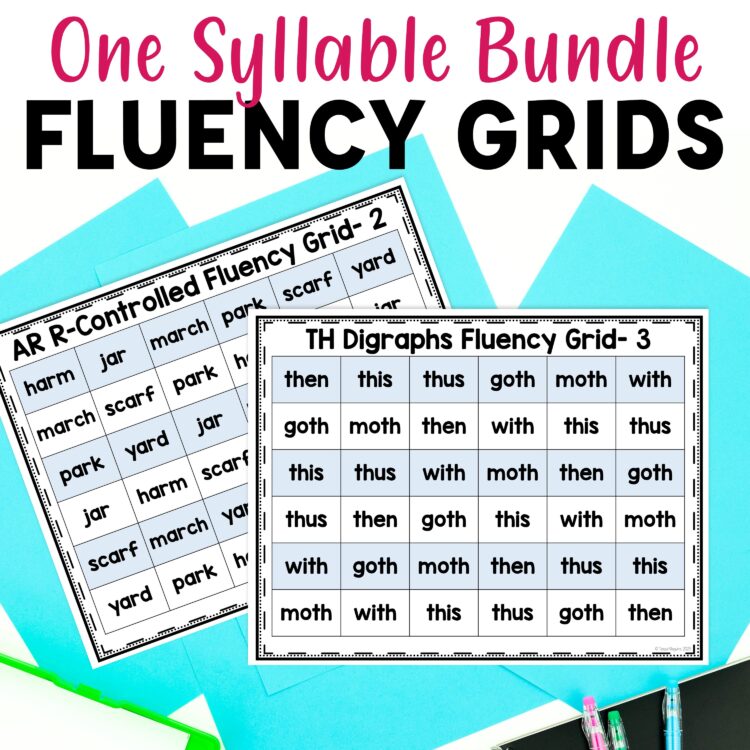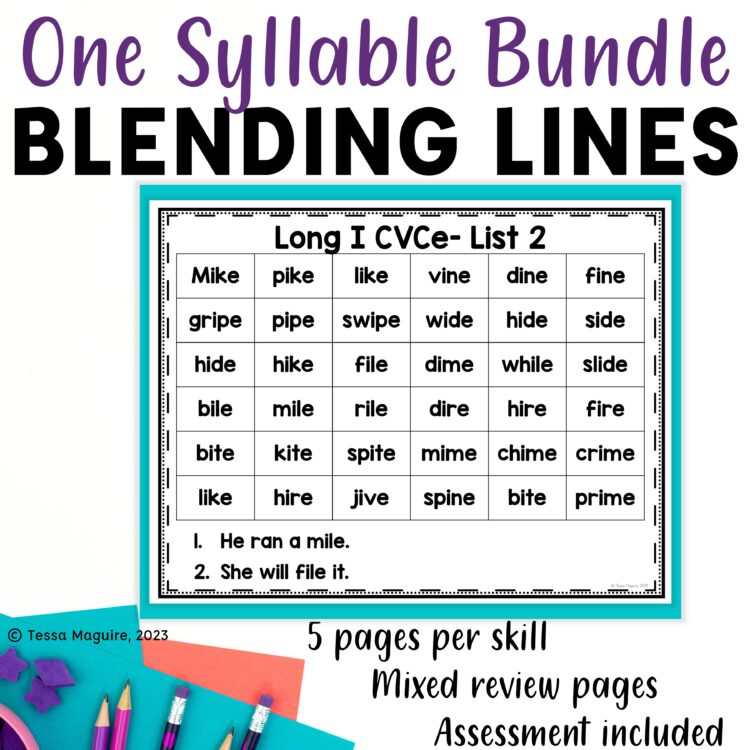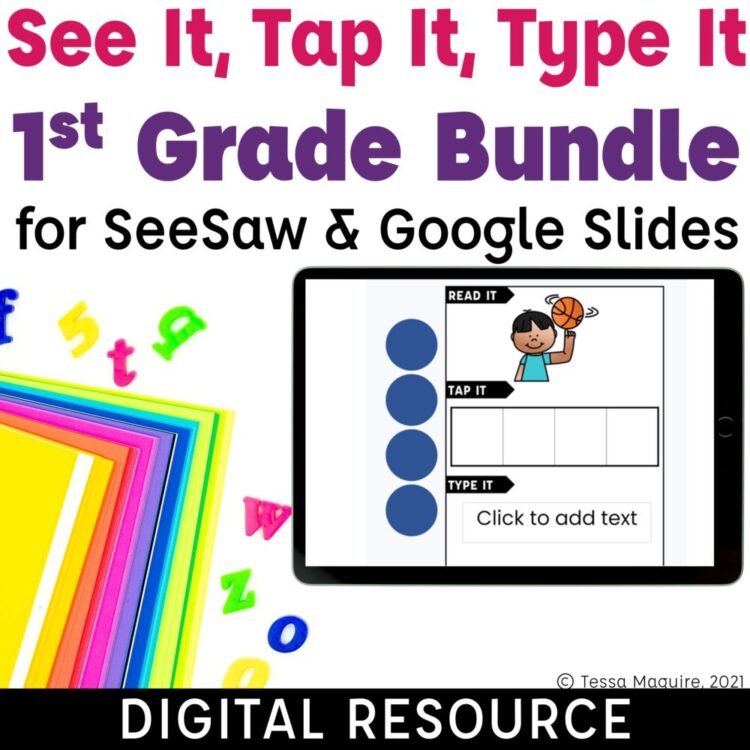© 2024 Tales from Outside the Classroom ● All Rights Reserved
The Simple View of Reading: Getting Started with SoR
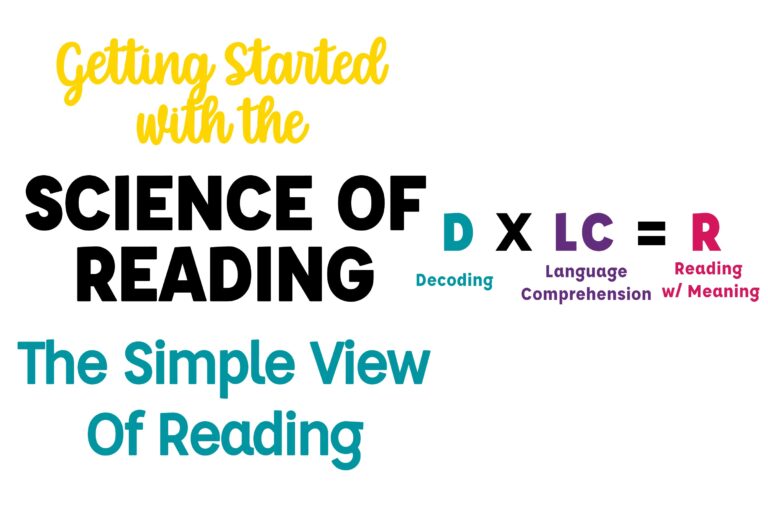
We know reading is a complicated task, and teaching reading is just as much, if not more, complex. In 1986, Philip Gough and Bill Tunmer, proposed an easy way to understand the complex combination of skills we used to read. They called it The Simple View of Reading. It’s simple because there are only two parts. When you see words on a page, what happens? You convert those written combinations of letters into words you recognize, and you match those words with your oral vocabulary. There is a great deal of evidence to support the Simple View of Reading. To be clear, we should not then assume that reading is a simple act. Instead, it is a complex multi-layered process. In this post, I’ll break own The Simple View of Reading and focus on its instructional implications.
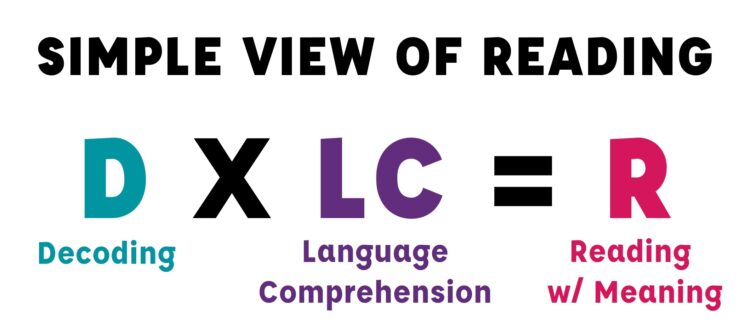
Reading comprehension is the product, not the sum, of language comprehension and decoding. They are multiplied together, rather than added, because when one is weak, you can’t just compensate with more of the other. Each are connected. Both components are essential and contribute independently to overall reading proficiency.
To break this down let’s start with the end in mind.
Reading comprehension is the ability to understand written language with purpose and meaning. It involves taking the words on a page and combining them with what you already know to grow knowledge of a subject, interpret a story, or otherwise make sense of the text at hand.
Decoding is using your knowledge of letters (graphemes) and the sounds they make (phonemes)—alone and in combinations—to read, orally or silently, text into speech. Two components of decoding are phonological awareness and phonics. It is that junction of both skills that leads to successful decoding.
Language comprehension is the ability to understand and express words and language. It’s what you’re doing basically any time you listen to someone talking or speak to others. Language, vocabulary, domain-specific content knowledge, and microcomprehension skills are key components to language comprehension.
Here’s a quick intro video from Zaner-Bloser that gives the basics on The Simple View of Reading.
It’s also important to note that oral language comprehension is different than written language comprehension. Your oral language needs to be able to understand it before it’s written. Written sentences are more complex than they are in oral language. One reason is the intentional way we construct them when we’re speaking and when we’re writing. Another reason is because oral language includes other input to convey our meaning- such as body language and inflection. This makes teaching comprehension all the more complex – and important.
We often do a poor job of adequately supporting, and/or teaching, both decoding and language comprehension. The “reading wars” are evidence of this. Balanced literacy, in my opinion, was born out of a push of balance for both. In reality, the instruction itself that came with balanced literacy instruction missed the mark. Currently, with the buzz around the Science of Reading, I’m afraid we’re leaning too far into decoding, again, and are forgetting that language comprehension is just as important.
Instructional Implications of the Simple View of Reading
The Simple View of Reading gives a powerful model for instruction – especially with our most struggling students. It’s a way we can identify student strengths and needs in the most simple way. Poor decoding is often easy to identify by simply listening to a student read orally. We can quickly identify those students in need of support based on poor reading fluency.
But, just being able to decode the words isn’t enough. Think back to college textbooks, especially if those textbooks were complex and on topics you aren’t as familiar with. For me, I can think of many science textbooks from coursework and how difficult they were for me to understand. I could decode most of the words. But, without the necessary vocabulary and background knowledge, it was incredibly difficult to understand the words I was reading.
Instruction and intervention should be targeted to the students’ specific weakness, which may be decoding, language comprehension, or both. These skills are separable, for both assessment and instruction, and there’s value in doing so. The chart below shows how both areas have an impact on students. To be a strong reader, you must have both good decoding and good comprehension.
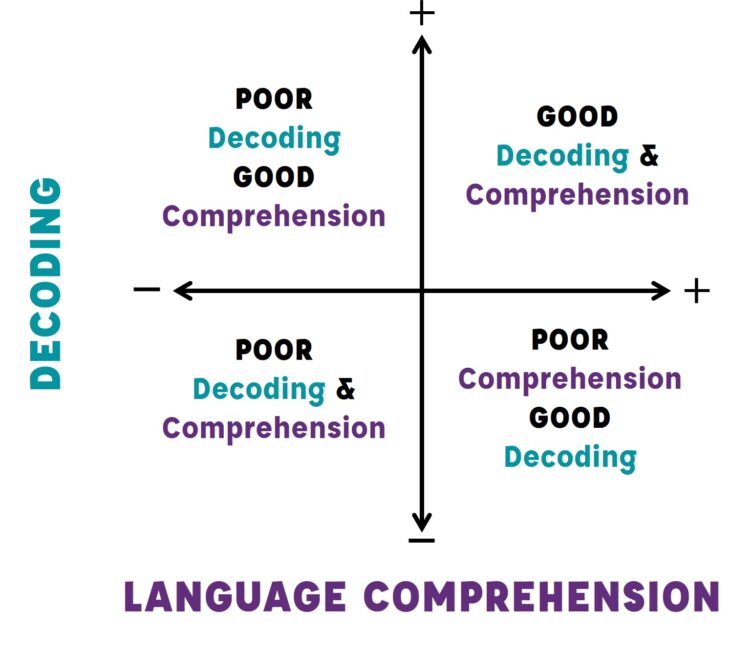
Every reader can be placed into one of the four quadrants above, based on the Simple View of Reading. Readers can have good or poor decoding, as well as good or poor comprehension. In order to be truly successful readers, one must be in the top right corner quadrant. If one area is weak, then it must be targeted and improved. Dyslexic students, with average language comprehension but poor decoding difficulties, are in the top left quadrant. Hyperlexic students, with excellent decoding skills but poor comprehension skills, are in the bottom right quadrant.
To identify where students fall on the above quadrant, we must assess them. Screening assessments are widely used to identify below grade level readers. These are often computer administered and identify students as being at grade level or at risk of struggles. Some, such as NWEA’s MAP assessment, even go a step further and identify student performance in domains, such as vocabulary, informational text, and fictional texts. Often, however, these assessments aren’t targeted enough to truly identify students’ weakness. And, no computer assessment is going to give an accurate picture for every kid, due to variances in performance when at a computer.
I prefer to use a phonics diagnostic assessment to identify students decoding abilities. This helps me quickly identify which skills students need support in to improve their decoding skills. If students are proficient decoders, but are showing weaknesses on screening assessments, it’s a language comprehension problem. Further assessments should target which area(s) of comprehension are in need of support.
It’s also important to note – there are many subskills that go into both decoding and language comprehension. It’s not enough to identify that there’s a problem in one of those areas. You must dive further into it to identify the exact weaknesses to target instruction. Scarborough’s Rope is a helpful model to delve into each area.
It’s been suggested that strong decoding skills are not necessary for successful reading comprehension if language abilities can make up for any weaknesses. This suggestion has led to instructional approaches that promote compensatory strategies for those poor reading skills. For example, using the picture clues to identify an unknown word, which was often a cornerstone of balanced literacy instruction. In many cases, students are successful with that strategy, and it feels like it works well. For a while. But, what happens when students begin reading books without pictures? How can students “attack” multi-syllable words? While decoding and language comprehension definitely support each other, we can’t rely on one to compensate for the other. They both must be strong.
Almost 40 years later, the Simple View of Reading continues to be supported by research. With that said, there’s been a bit of refinement in models. Our understanding of what goes into both decoding and language comprehension continues to grow. This post by Dr. Tim Shanahan gives great information on why the Simple View is too simple. Decoding the Simple View of Reading by Mark Seidenberg is also a great read. In future posts, I’ll explore the new models that take the Simple View of Reading to the next level.
Want More on SoR?
Want to keep up as I explore key components of the Science of Reading? Get each post in the series your email by signing up below. First is my Introduction to the Science of Reading and then I dive into The 5 Pillars and the NRP.
Send me the SOR series!
Signup for to receive each installment in my Introduction to the Science of Reading series.
Thank you!
You have successfully joined our subscriber list. Please check your email for the confirmation email. Check your spam folder for Tales from Outside the Classroom if you don’t see it.
Further Reading on the Simple View of Reading
Simple View of Reading by Reading Rockets
The Simple View of Reading: Advancements and False Impressions by Hugh w. Catts, PhD.
What is Linguistic Comprehension in the Simple View of Reading by Dr. Tim Shanahan
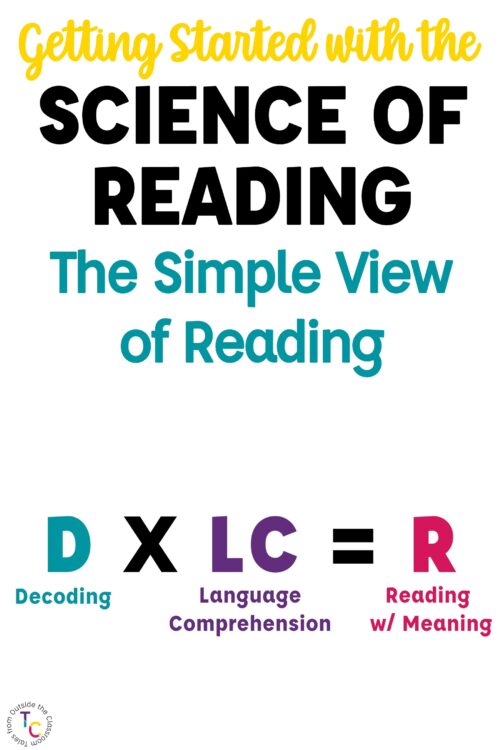
Newsletter Sign Up
Signup for my weekly-ish newsletter. I send out exclusive freebies, tips and strategies for your classroom, and more!
Please Read!
You have successfully joined our subscriber list. Please look in your e-mail and spam folder for Tales from Outside the Classroom. Often, the confirmation email gets overlooked and you're night signed up until you confirm!

Hi! I’m Tessa!
I’ve spent the last 15 years teaching in 1st, 2nd, and 3rd grades, and working beside elementary classrooms as an instructional coach and resource support. I’m passionate about math, literacy, and finding ways to make teachers’ days easier. I share from my experiences both in and out of the elementary classroom. Read more About Me.









